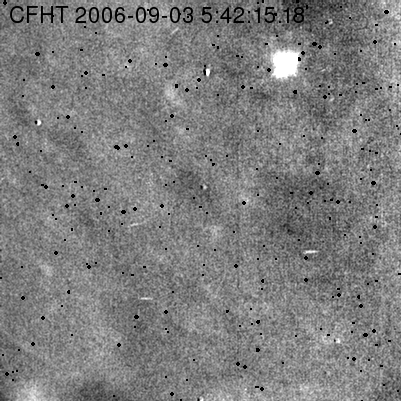Click here to get a mosaic of 15
exposures starting with the one
at the time of the flash, with each having the same size and scale as
the pictures below (makes for a big picture!). For an animation worth the first ten
exposures, click here!
|

This an animation showing the
scene of the impact from the exposure just before the impact to ~130s
later (~10 images). In order to look at the dust generated by the
impact, the scene from before the impact has been substracted from all
the images. Each image is a snapshot over 10s, with a gap of
around 5s between exposure. The expansion of the dust cloud is
clearly seen...
No processing to enhance the signal and minimize the background noise
has been made on these iamges. You can see the effect of some image
processing when comparing with the mosaic or the animation on
the
left...
|

This is an animation generated as
on the left, but looking back in time for ~150s before the
impact (a test to show how "uneventful" the scene was before the
impact: it gives more confidence to the untrained eyes that indeed is
indeed something happening after the impact!)
|







